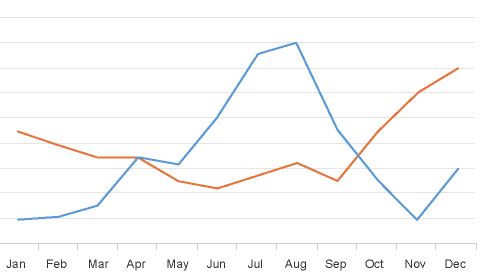How can your hospice organization find out what your employees are thinking? How do you know if your employees are satisfied? Dissatisfied? How do you know if employee satisfaction varies across different agencies in your organization? Do you have a systemic problem in one of your agencies? Is one of your regions better or worse than the others?
Using employee surveys to measure employee sentiment
Hospice organizations typically conduct employee surveys to try to dig into this information. Employee surveys are prepared by the corporate office and survey the entire organization – that is – all hospice agencies across the entire organization. The surveys are typically conducted no more frequently than once per year and involve significant planning and cost. A survey response rate of 70% is considered a good response rate.
Organization may also conduct more targeted “pulse surveys” – to gather the employee sentiment on a targeted issue. Pulse surveys are run more frequently, and a 50% response rate is considered a good response rate.
Using public data sources to measure employee sentiment
However, there is another valuable source of employee sentiment that is often overlooked by hospice organizations: both current and former employees post valuable company reviews on public employment websites. These reviews provide valuable and actionable insight that can be used to monitor employee sentiment, detect trends over time, identify differences between agencies or regions in the organization and a wealth of other useful information.
How can information from public websites be used?
How can a review from a public website be used to provide insight to a hospice agency? Let’s examine some reviews to see what insight can be gained.
Data points that we can gather from this review are the following:
- Rating: 5 star
- Employment status: current
- Date of review: March 10, 2023
- Type of employment: per diem
- Job role: Home recovery RN
- Location: Marshfield, WI
- General comments: supportive management
Here is another review:
Data points that we can gather from this review are the following:
- Rating: 5 star
- Employment status: former
- Date of review: April 10, 2017
- Type of employment: contractor
- Job role: data entry
- Location: Brentwood, TN
- General comments: excellent company to work for
Here is a third review:
Data points that we can gather from this review are the following:
- Rating: 3 star
- Employment status: former
- Date of review: August 1, 2021
- Type of employment: full time
- Job role: Patient care coordinator
- Location: Vestavia Hls, AL
- General comments: management does not respond to input
How can the data be stored so maximum value can be extracted?
A hospice agency should store the data in a database format – either in a database or in a spreadsheet – so that maximum value can be extracted. By storing the data in this manner, metrics of interest and can be created. Performance over time can be monitored. We provide an example below. Suppose the three reviews above are for three different locations for the same hospice organization – one for an agency located in Marshfield, WI, one for an agency located in Brentwood, TN, and one for an agency located in Vestavia Hls, AL. The data can be stored in a spreadsheet as follows:
Additional columns in the spreadsheet can be added to provide additional information. For example, categories of interest may be:
- classify the employee type by categories such as clinical, corporate, office team, etc.
- classify the city / state by regions in the organization.
As the number of rows in the spreadsheet grows patterns can be identified and valuable metrics can be created and monitored – in time and over time.
Where can you learn more?
- Challenges with and value of Employee surveys
- What is sentiment analysis





0 Comments